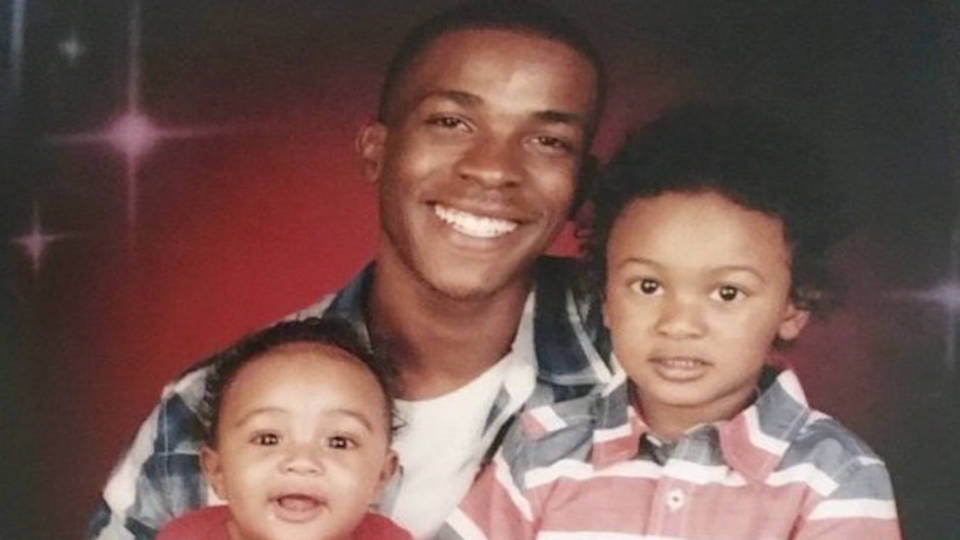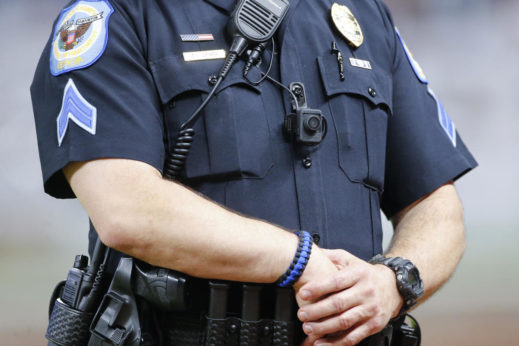
SACRAMENTO, Calif.—Police body camera footage was released last Wednesday after backlash from the public over the incident that resulted in Stephon Clark’s death. An officer of Sacramento Police Department fired 20 bullets into the unarmed 22-year-old on the night of March 19, killing him in his grandmother’s backyard. Officers were said to have been responding to reports that a man broke into at least three cars along 29th Street in the Meadowview area.
Initial statements from the SPD alleged that the officers on site believed Clark’s iPhone to be a gun. “He looked back at our officers and faced them. And had something, an object in his hand, and pointed it at our officers,” said Sacramento Police Sgt. Vance Chandler. “And at that time our officers believed it was a firearm, and out of fear for their own lives they fired their service weapons.” As is standard procedure in officer-involved shooting, the two primary officers involved in the shooting have been placed on paid administrative leave while an internal investigation proceeds.
The Black Lives Matter Sacramento chapter issued a public statement on March 21 saying that Clark’s death was unjustified, and argued that the police department’s claims have been inconsistent. “Within 48 hours Sacramento Police Department changed their story four times: first, they said he was carrying a gun; then they said he was carrying a ‘toolbar’; then they stated he was carrying a wrench; lastly, they confirmed that he only had a cellphone.” The group is calling for the two officers involved to be fired and charged with murder.
Organizers demonstrated the morning following the release of the video footage, storming Sacramento City Hall before spilling out onto to the streets and blocking off Interstate 5. The protest occurred during the morning rush hour and delayed traffic, with hundreds of demonstrators chanting “black lives matter” in unison. The demonstration in Sacramento ended with no arrests. People in the local community and far beyond have taken to social media calling, once again, for police accountability.
This situation is far from the first of its kind. For years, reports of police brutality against African Americans have filled the news and raised questions about inherent inequality and racism in the criminal justice system. A recent New York Times feature covering 15 high profile cases against police who have killed black individuals found only two incidents have resulted in any kind of conviction of involved officers. From the earliest videos of Eric Garner being choked to death by the NYPD, to the more recent 2016 shooting of Philando Castile in Minnesota, the cycle of state-sanctioned violence continues to be an topic of national tension.
To guard against possible police misconduct, city officials have proposed better funding for equipment and police training. In Chicago, Mayor Rahm Emanuel responded to a Department of Justice report citing patterns of numerous civil rights violations by the Chicago Police Department with a proposed $95 million dollar police academy. He has suggested the new institute, had it existed earlier, could have helped prevent some of the impropriety that initially spawned the DOJ investigation, such as the 2014 shooting of Laquan McDonald.

Another widely adopted practice has been to mandate the wearing of body cameras by police officers to both deter misconduct and provide a record when officer-involved violence occurs. The effectiveness of the cameras as a deterrent remains questionable, however. Studies have shown that they have little effect on police behavior. Eric Garner’s death was the first of many video recorded incidents to affirm the conclusion. “Bodycams and technology alone won’t save lives,” says Chicago-based BLM organizer Maria Hernandez. “Officers can simply get in the habit of yelling ‘Gun!’ for the camera—no need to even see the alleged gunman, no need to see a gun on camera or at all.”
In the case of Stephon Clark, the police body camera footage indicated that there were minimal efforts on the part of the officers to engage with Clark before they opened fire. After back-up officers arrive on the scene, they can be heard asking whether the involved officers discovered any weapons on the body, to which an officer can be heard saying, “Hey, mute” right before the video goes silent. This raises questions about the Sacramento Police Department’s credibility and their “shoot first, ask questions later” tactics.
An internal investigation is now underway as the SPD seeks to determine whether their officers reacted irrationally or truly had reason to fear for their lives when they opened fire. “How long will the courts and the laws continue to allow police to kill on the basis of alleged fear alone?” asks Hernandez. So far, it appears that Clark’s death may go down as yet another example of the systemic and institutional violence that black communities face from police. The tragedy has only amplified the national call for police accountability to the communities they serve.










